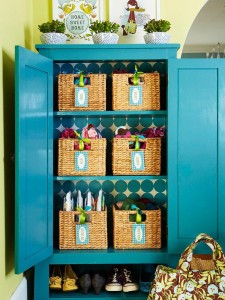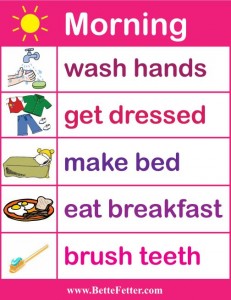Insights from Children’s Art Expert Bette Fetter: Top Blog Posts for March 2014


I recently went through the messy and exhausting process of deep cleaning of my home office.
As much as a good purging and declutter is for us as adults, it is even more significant for our kids. Young children are in the process of developing internal order and the space around them profoundly affects them externally and internally.
Standardized tests can strike fear in the heart of any man – young and old, but ever wonder why? It seems odd that a few questions that require a pencil dot on a Scantron Sheet, can bring forth such stress and emotion. This is especially true for visual-spatial learners whose test results don’t reflect their true intelligence or ability.
Testing time is here in many US schools. When my kids were young, there was much less emphasis on standardized testing and test results. Now schools devote much of February getting kids prepared for standardized testing that happens in March.
There is a rather critical matter at hand in education and I want to speak very directly about it. The arts are being eliminated from our schools and testing is on the rise. There is a prevailing notion that we need less of the arts in order to make more time for the subjects that are being tested and for the tests themselves.
This line of thinking actually results in lower test scores and disconnected, discouraged, under-achieving students. Why? Because the arts, the very thing schools want to eliminate, are essential to the majority of the student population; not because art is a fun way to relax or express oneself – but because the arts actually fuel the brain. The majority of the student population are visual-spatial learners that NEED the arts to think effectively.
Remember the times you sat down in class and the teacher said, “Take out a piece of paper. We’re going to have a pop quiz!” Waves of panic flooded your body as you stared at that blank sheet of paper. Even when you were confident about what you learned – there was something about a pop quiz – a test- that could rattle the best of us. Our kids are no different.  And they take a lot more tests than we ever did.
And they take a lot more tests than we ever did.
Here are some things you can do as parents and grandparents, to help your kids get ready for test time.
Last year I shared a lot about the importance of Preschool Development and helping young kids develop their own internal order. 
News stories about Common Core, the new federal standards for schools, are on the rise as schools gear up for spring testing. While I have long been opposed to standardized testing, like many others, I was hopeful improvements in education were on the horizon. Sadly, the more I read about Common Core, the more concerned I am for our children.
However I was recently reminded of the power of passionate informed parents when I read about two moms, Heather and Erin, that changed the course of education in Indiana: 2 Moms vs the Common Core: How an Eight Year Old’s Homework Assignment Led to Political Upheaval.
Heather Crossin and Erin Tuttle led a campaign to inform fellow parents, educators and legislators about some lesser known details in the new standards.

Does your child love to do puzzles and Lego’s?
Do they enjoy building and making things three dimensionally?
Do they often struggle to sit still in the classroom and do math or writing assignments?
If this sounds like your child, you may have a spatial learner. These kids are visual learners that are highly gifted in spatial thinking.